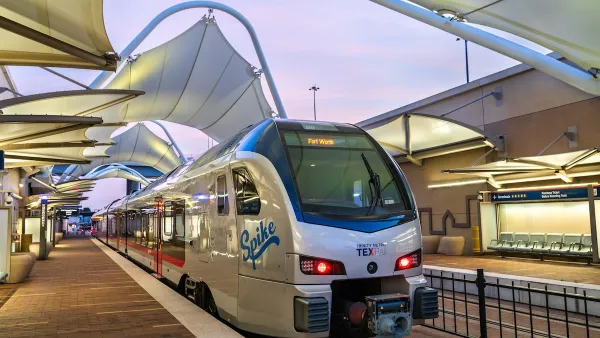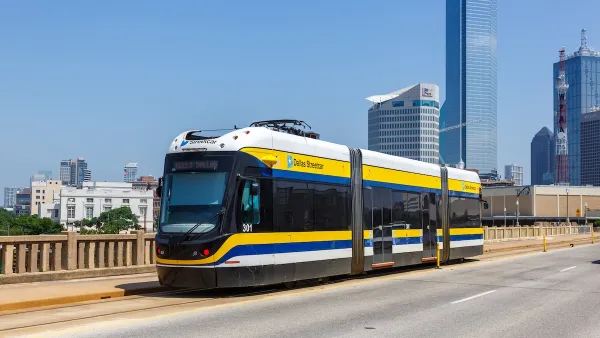After the New Cities Summit last week, and the U.S. Conference of Mayors this week, Dallas has been the location of a lot of recent discussion about the future of cities.
In summing up last week's New Cities Summit, Brandon Formby notes that "even though the country predominantly moves by automobile, many of the conversations focused on public transit and biking." Formby then goes on to provide some insight into discussions on bike lanes, automated cars, and streetcar projects, among other questions of alternative transportation.
In an earlier article, David Flick explains the New Cities Summit's focus on global cities: "Cities, [conference participants] said, must find a way to deal with growing economic inequality and climate change. They must connect with their residents and help them connect with each other. And they must regard culture as more than a luxury."
And in another article, David Mosier describes the reactions of conference attendees to their host city of Dallas:
"Visitors in Dallas for the international New Cities Summit found a strange place that mirrored neither the Texas cliche of cattle and oil nor expectations of a bustling new metropolis."
"Instead, many found an optimistic, spirited city but also one with empty sidewalks, impossibly wide roads, an unhealthy attachment to their cars and not enough vibrancy for a population of more than 1.2 million. Some also saw a place embracing sustainable development and trying to roll back decades of old-fashioned urban planning."
FULL STORY: Transportation trends, challenges emerge at Dallas conferences

National Parks Layoffs Will Cause Communities to Lose Billions
Thousands of essential park workers were laid off this week, just before the busy spring break season.

Retro-silient?: America’s First “Eco-burb,” The Woodlands Turns 50
A master-planned community north of Houston offers lessons on green infrastructure and resilient design, but falls short of its founder’s lofty affordability and walkability goals.

Delivering for America Plan Will Downgrade Mail Service in at Least 49.5 Percent of Zip Codes
Republican and Democrat lawmakers criticize the plan for its disproportionate negative impact on rural communities.

Test News Post 1
This is a summary

Test News Headline 46
Test for the image on the front page.

Balancing Bombs and Butterflies: How the National Guard Protects a Rare Species
The National Guard at Fort Indiantown Gap uses GIS technology and land management strategies to balance military training with conservation efforts, ensuring the survival of the rare eastern regal fritillary butterfly.
Urban Design for Planners 1: Software Tools
This six-course series explores essential urban design concepts using open source software and equips planners with the tools they need to participate fully in the urban design process.
Planning for Universal Design
Learn the tools for implementing Universal Design in planning regulations.
EMC Planning Group, Inc.
Planetizen
Planetizen
Mpact (formerly Rail~Volution)
Great Falls Development Authority, Inc.
HUDs Office of Policy Development and Research
NYU Wagner Graduate School of Public Service





























